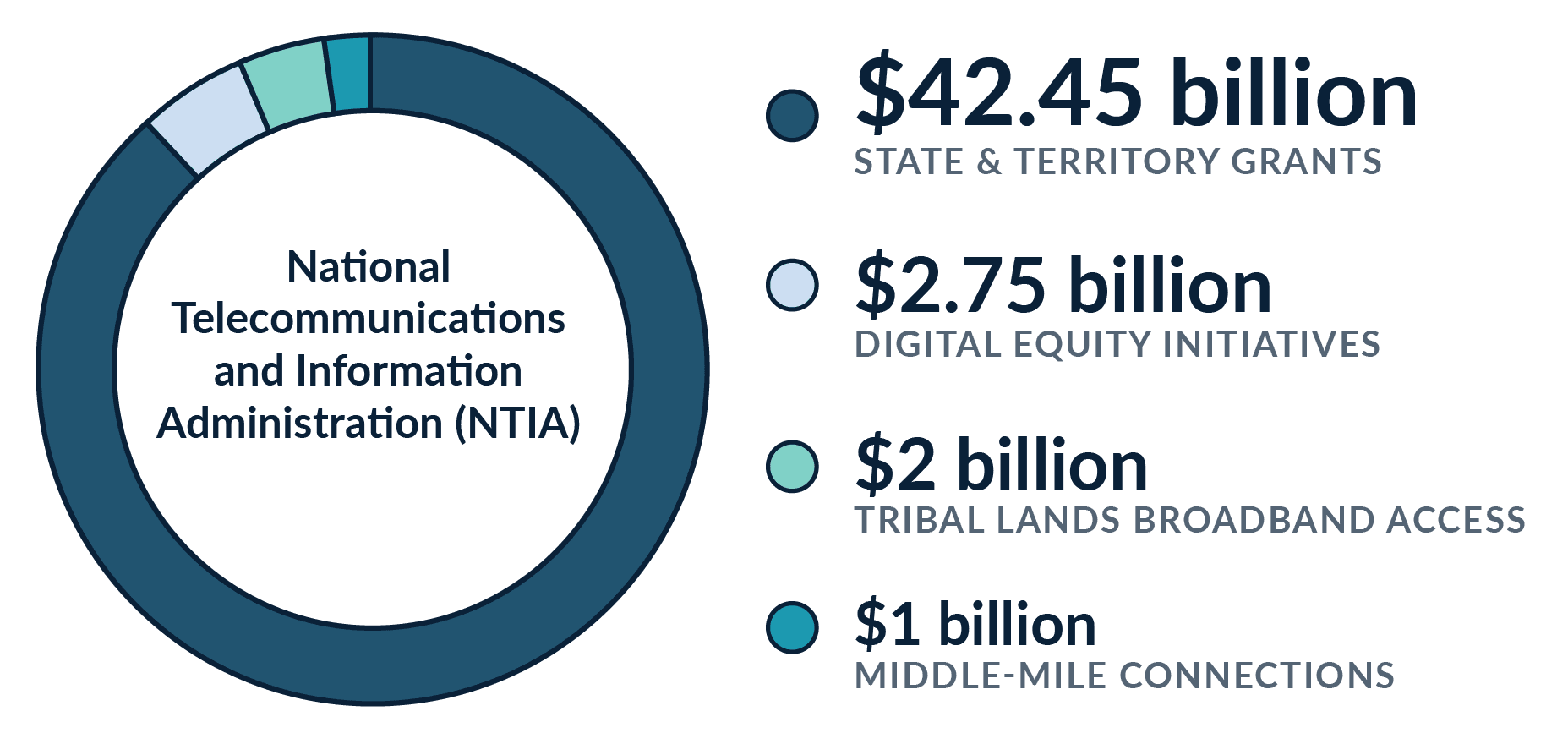The topic of GitHub Copilot and OpenAI Codex have been discussed in detail — the legal and ethical issues, as well as security risks. As Civis weighs the technical and…
President Biden’s Infrastructure Investment and Jobs Act, passed in Nov. 2021, commits $65 billion to connecting America — to expanding dependable high-speed internet access to all corners of the U.S., no matter how far-flung or remote, and ensuring no one is left stranded on the wrong side of the digital divide that separates untold millions of citizens from essential information and communications technologies.
It’s a promising step forward. But infrastructure alone isn’t enough to bridge the digital divide.
A truly comprehensive and effective solution to the nation’s digital inclusion dilemma must advance beyond broadband access improvements to authoritatively address the other looming obstacles to coast-to-coast connectivity — namely, affordability and adaptability.
Investing in infrastructure and inclusion
The Infrastructure Investment and Jobs Act allocates about $48 billion in funding to the National Telecommunications and Information Administration (NTIA), which assumes responsibility for the following programs:

- $42.45 billion in grants to states (including the District of Columbia and Puerto Rico) and territories to finance high-speed broadband deployment to households and businesses currently without access to such services
- $2.75 billion to fund digital equity initiatives, including digital skills training and online accessibility for individuals with disabilities
- $2 billion to boost access to and adoption of broadband service on Tribal lands
- $1 billion for middle-mile connections to build a high-speed backbone for communities, businesses, and anchor institutions
Another $14.2 billion is earmarked for the FCC to establish the Affordable Connectivity Program, which replaces the Emergency Broadband Benefit program launched in May 2021.
While the Infrastructure Investment and Jobs Act addresses access, affordability, and adaptability to varying degrees, there are questions about its effectiveness in all three phases:
Access poses challenges simply because there’s so little clarity around which Americans are served by broadband internet and which aren’t. As noted in the previous blog in this series, anywhere between 14 million and 157 million people nationwide do not have access to high-speed internet.

Affordability is another question mark. The Affordable Connectivity Program provides $30 monthly broadband subsidies for households at or below 200 percent of the federal poverty line, down from $50 per month in the Emergency Broadband Benefit program, However, the Open Technology Institute’s 2020 Cost of Connectivity Report identified average advertised internet costs in the U.S. of $68.38 per month, higher than the average price for all of North America, Europe, and Asia.
How large a role does broadband affordability play in the digital divide? According to nonprofit EducationSuperHighway, approximately 28.2 million of the nation’s 122.8 million households do not have high-speed broadband, and 64 percent of these unconnected households are offline because they can’t afford to connect; by comparison, only 25 percent of these unconnected households are in areas without wired or wireless broadband service, or where service speeds and quality are unreliable. In addition, a Civis Analytics survey conducted in November 2021 found that nearly a fifth of U.S. adults have had trouble paying their internet bills.

Adaptability — i.e., an individual’s ability to learn and navigate technologies that are new to them — also plays a decisive role in the digital divide. EducationSuperHighway found that 11 percent of offline U.S. households have access to available broadband networks, as well as the financial flexibility to pay for internet access; these 3 million households have simply chosen not to connect, for reasons including digital illiteracy along with reliance on smartphones, access options outside the home, and concerns about privacy or going online.

The Infrastructure Investment and Jobs Act dedicates $2.75 billion to digital skills training and related equity initiatives. But if we don’t know who needs these programs, how large a population they comprise, where they live, or which specific issues are keeping them offline, how can we help usher them into the digital age?
How data and outreach fill in the gaps
As the NTIA, FCC, and other agencies continue to formalize and roll out their Infrastructure Investment and Jobs Act initiatives, it’s imperative they evolve their efforts to focus squarely on data and outreach — cornerstones of the transformational progress the Infrastructure Investment and Jobs Act was created to achieve.

Data on which Americans continue to live without high-speed internet access, where they live, and precisely why their home sits on the wrong side of the digital divide — accurate and up-to-date information that is consolidated, centralized, secured, and readily accessible to all relevant stakeholders — is fundamental to improving access, affordability, and adaptability.
A provision in the Infrastructure Investment and Jobs Act grants the federal government greater authority to demand better data from internet service providers, but legislators should also look at other complementary sources — for example, school districts and other local-level organizations who may have distance learning information and broadband coverage maps born out of the pandemic.
“Schools are proving to be very valuable partners in figuring out the needs of the community — including where broadband does and does not exist in their communities,” Amina Fazlullah, director of equity policy for Common Sense, a nonprofit focused on education, told CNet.
According to Fazlullah, schools are uniquely positioned to collect data about students’ broadband access (e.g., which homes are served, the quality of the service they receive, which applications are used over their connection, etc.). Educators may also possess demographic and socioeconomic insights that can illuminate the root causes determining why some students lack high-speed access.
Outreach is vital to alert unconnected citizens when broadband access arrives at their door, and to steer them in the direction of any subsidies and digital literacy programs they need. However, state, county, and municipal governments often struggle to promote these types of programs, or to deliver messages that drive awareness or action.

Data cited by EducationSuperHighway, for instance, reveals that only 25 percent of low- and lower-middle-income households have knowledge of the Emergency Broadband Benefit program: in addition, many unconnected households expressed concern about sharing personal information as part of the EBB sign-up process, others were skeptical the program would actually cover the cost of connecting their home to broadband service, and still others grappled to provide documentation of their income status. In total, only about 16.4 percent of eligible Americans were enrolled in the EBB initiative as of October 2021.
This same fate can’t befall the Affordable Connectivity Program, or any other facet of the Infrastructure Investment and Jobs Act. Government organizations need quantitative information and insights to roll out compelling, sustainable outreach campaigns that speak loudly and clearly to the people that most need to hear about these programs. Most public sector organizations already have access to data to improve outreach, and most have staffers possessing some level of data analytics skills; with the right software and services, governments can efficiently and cost-effectively leverage these resources to identify the people poised to benefit most from the Infrastructure Investment and Jobs Act, and determine how, when, and what to communicate to this audience.


